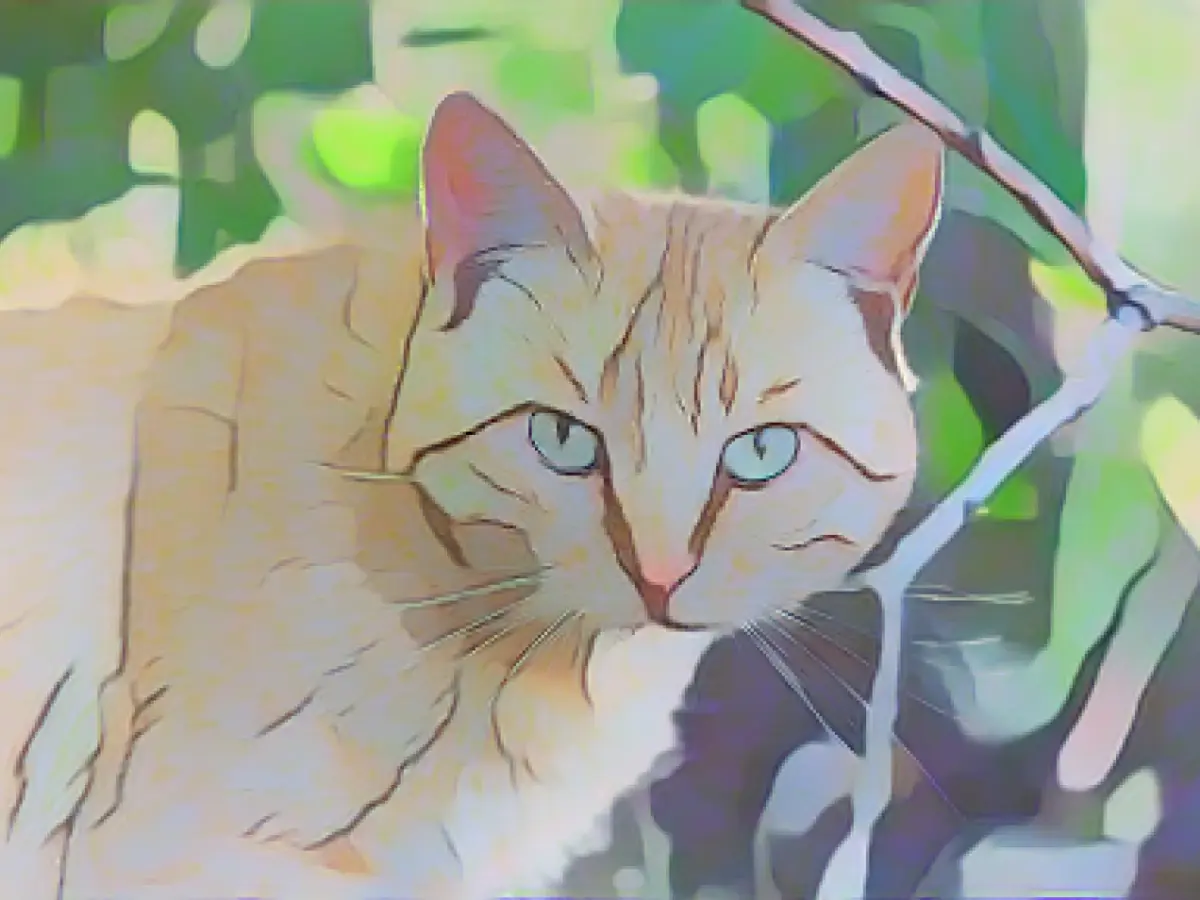Help in veterinary medicine - "Poker face" decoded - AI to recognize pain in cats' faces
When cats suffer from an illness, their owners often realize it quite late. This is because the animals are true masters at hiding pain and showing no signs of weakness. Some experts even speak of a "poker face".
In future, artificial intelligence (AI) could help with early diagnosis: In a joint project, researchers from Germany and Israel are currently working on AI programs that will analyze cats' faces to find signs of pain. The experts hope to develop practical aids for veterinary medicine and also for private individuals, for example in the form of apps that can be used to photograph and analyze cats' faces.
It has long been known that cats' faces show signs of discomfort. The animals show a "pain face", i.e. changes in their facial expressions and the position of their ears, for example. Such behavior is also known from other animals, such as rabbits.
Software is trained on the facial expressions of cats
Humans need a lot of practice and experience to read animals' "pain faces". Human assessments are also often subjective. In recent months, a team of experts from the fields of AI and veterinary medicine has developed two algorithms that use facial expression analysis to recognize whether cats are feeling pain. This was reported by several scientific media outlets and the research institutes involved. "Artificial intelligence (AI) offers great opportunities to better recognize pain in cats and to be able to carry out treatments more gently," writes the University of Veterinary Medicine Hannover. The institution's foundation (TiHo) and the Information System Department of the University of Haifa in Israel are working together on this project.
The new AI programs are currently able to correctly interpret the facial expressions of pets in up to 77 percent of cases, the website "Spektrum.de" reported this week, citing an exclusive translation from the journal "Scientific American".
"AI can see more than the naked human eye because it reacts sensitively to subtle details", "Spektrum.de" quotes Israeli computer scientist Anna Zamansky.
As with other AI programs, the international team initially needed a lot of data to feed the software. According to reports, more than 80 cats were photographed at the University of Veterinary Medicine Hannover Foundation. The animals were of different ages and had different diseases.
New software already has a fairly high hit rate
Two different AI programs analyzed the facial expressions, such as the tension of the facial muscles. The researchers compared the results of the AI with the clinical data they had collected on the animals.
One of the two programs had an accuracy rate of 65 percent in detecting pain in the animals' faces, while the other had an accuracy rate of 77 percent, according to the description of the research, which was reported on last summer. "AI systems offer us a huge opportunity in veterinary practice to improve the care of cats," said Professor Sabine Kästner, who is involved in the project.
What was exciting for the team was that the nose and mouth region in particular played a role in the machine pain classification, as the Hanover scientists describe the research. The position of the ears, which was actually taken into account in the "pain face" and other classifications, was less important.
The researchers now hope to develop programs for cat owners and veterinarians that are suitable for everyday use. However, it is not yet foreseeable when vets will be able to treat cats with the help of such AI-supported methods.
Read at stern+: A professor writes about genetics and field research - and in the case of Jonathan B. Losos, the result is an exciting non-fiction book. Animal lovers learn how the cat once went "from the savannah to the sofa".
Read also:
- Snow chaos further restricts Bavaria
- Unanimous decision: faster wolf culls possible
- The year of climate records: extreme is the new normal
- Snow and ice paralyze southern Germany
- The researchers from Germany and Israel are utilizing artificial intelligence to develop AI programs that can analyze cats' faces and identify signs of pain, which is often hidden due to their 'poker face' behavior.
- The AI programs, currently able to correctly interpret pain in cats' facial expressions with up to 77% accuracy, are a step forward in early diagnosis and treatment, as they can recognize subtle details that human assessments may overlook.
- With the new AI software having a high hit rate, there's potential for developing practical aids for veterinary medicine and private individuals, such as apps that can help cat owners and veterinarians evaluate cats' facial expressions for signs of discomfort.
Source: www.stern.de






